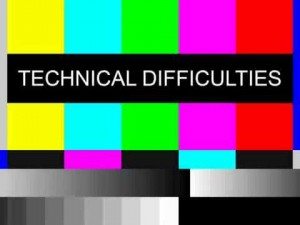 Every September, I face a new class of third-year Environmental Resource Science students at Trent University in Peterborough, Ontario. The course title is “Waste Management.” My very first lecture is always the same: it starts with how we measure waste.
Every September, I face a new class of third-year Environmental Resource Science students at Trent University in Peterborough, Ontario. The course title is “Waste Management.” My very first lecture is always the same: it starts with how we measure waste.
It may seem simple, but the various measurements used for waste and recycling require careful consideration of what exactly they tell us. The issue of how we measure waste reduction is so important that my company, CM Consulting, has made measurement a central part of all our work. We insist that latitude for interpretation is unacceptable; if industry is to be held to the highest standards, it must clearly delineate what measurements honestly represent.
So one can imagine how I felt when Solid Waste and Recycling Management magazine, to which I have contributed to for over 15 years, posted an article, written by staff, that cherry-picks two measurements from one table in our newly published The WEEE Report 2013, and draws conclusions from those measurements that completely misinterpret the report. I complained and the editor immediately took the article down.
Of course, we see this often with media trying to get a story out fast, sometimes even sensationalizing or throwing out meaningless comparisons for the sake of more clicks. WEEE recycling is complicated. What could only have been a quick scan and a review of one table in our report led to the conclusion that Ontario leads the way in WEEE recycling in Canada.This is not the case.
The very first paragraph of our WEEE Report states, “traditionally measuring the performance of provincial electronics recycling programs has been limited to indices of program results, such as tonnes collected for recycling per capita and, in some cases, the capture rate. Although such measurements are useful, the information they provide is void of any real meaning in terms of program performance.”
We further explain (on the next page) that, “None of the performance indicators, can paint an accurate picture of the performance of a program. For example, one province might collect significantly more tonnage than the others, but this larger amount could be reflective of the province¹s size and the scope of materials accepted rather than an indicator of superior performance.” A quick glance may also suggest that Ontario has the lowest cost per tonne compared with other provincial programs; however, this may not necessarily be a good thing.
Our report points out that the lower costs in Ontario may be the result of reductions in OES fees made to processors. Our report further points out that one of the reasons OES is paying lower fees to processors is due to their new service provider selection criteria. Built into the procurement selection process is a scoring template based on a number of factors like costs, recycling efficiency and transport. When the program plan was approved by the province in 2008, the importance of recycling efficiency in terms of scoring was weighted 50 percent, but today it is a mere 20 percent, with 55 percent of the score now allotted to cost (this is up from an original 20 percent in the first approved program plan and later 30 percent in the revised program plan).
The most important “take-away” from the entire WEEE Report 2013 is that most stewardship programs in Canada have a processing standard that is good standard on paper, with room for improvement. The approval process is lacking in some areas, like approving downstream vendors in countries like China, India and Pakistan without on-site audits. Standards should be overseen by government or a totally independent third-party to avoid the proverbial “fox in charge of the hen house” scenario, which is currently the case in most programs in Canada (except Alberta).
This is further supported by the Institute for Electronic and Electrical Engineers (IEEE) in their own standard, (1680-series) which is considered as the de facto standard. IEEE clearly articulates that where the manufacturer has control over the choice of service provider, the certification body for the service provider be independent of the manufacturer to avoid any conflict of interest.
WEEE reuse and recycling is complicated, which is why analysts, pundits, governments and media should be careful when making determinations on this very important issue. We still have a long way to go to ensure that all the facilities and workers that handle our e-waste, in Canada or abroad, maintain high operating standards with independent and regular verified auditing based on measurements that are meaningful.
Clarissa Morawski, Principal, CM Consulting

